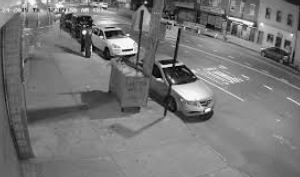What Are Night Vision Cameras and How Do They Work?
CCTV camera is an excellent way to protect your home and business from burglars. Wireless CCTV cameras allow you to monitor the activities around your premises from your smartphone. Nowadays, most surveillance cameras come with night vision technology which allows them to record footage even in the dark. Read on to know more about the working of night vision cameras.
What is a night vision camera?
A night vision camera is an optoelectronic device that captures images in low-lightning conditions. The image may be a combination of visible light and infrared light. These cameras are mostly used by law enforcement agencies but are also available for commercial use. They have an image intensifier tube and a water-resistant casing to protect the camera against rain. Some cameras also include optical devices, such as telescopic lens, sacrificial lens or mirrors.

How does night vision cameras work?
Night vision security cameras use one of these three methods to capture images in the dark.
Low-light imaging
Low-light imaging camera uses an image intensifier to amplify available light. The available light in the area is focused through the objective lens onto the photocathode of the image intensifier. The photocathode is a photosensitive material that emits electrons when light is focused on it. The electrons released by the cathode are accelerated by an electric field and they are bombarded on a plate. These electrons enter the holes of the plate and bounces on specially coated internal walls. This activity generates more electrons and creates a denser cloud of electrons representing an intensified version of the original image. This glows the phosphor screen and an image is generated on the screen of the attached device.
Thermal imaging
Thermal imaging cameras detect the objects by infrared radiation and creates an image based on that information. The emitted infrared light is focused by a special lens and it is scanned by a phased array of infrared-detector elements. The detector creates a detailed temperature pattern called a thermogram and it is converted into electric impulses. A signal-processing unit translates the impulses from the elements into data for display. The combination of these impulses creates an image on the screen.
Infrared illumination
IR illuminator cameras detect the invisible wavelengths of light and use infrared light to illuminate images in dim lighting conditions. IR cameras have a series of infrared LEDs that transmit infrared light in the dark. As infrared light cameras can interfere with colour images, IR cameras have a cut-out filter to block it during the daytime. The filter is fitted between the lens and sensor, allowing only the visible light to pass through in the daytime. Once the light level in the area drops to a certain point, the cut-off filter changes its mode and allows infrared light to pass through it.
Some Useful Tips
The CCTV installation and the type of security camera can have a great impact on the quality of the recorded image. Here are some of the useful tips for getting the best from night vision cameras.
Make sure the IR is powerful
This is one of the most important things to consider while choosing a night vision camera. All IR cameras have a quoted maximum range of 5m to 50m. You must keep in mind that the image quality will not be the same as indicated in the quoted range. Estimate your camera range and then add on a third to it. So, if you want to see 30m, then it’s worth investing in a camera with a 40m range.
Ensure that the field of view view is clear
It’s important to ensure there are no devices that block the vision of the camera. This is because most cameras will adjust the exposure to give the best image. If there is an object jutting the frame, the LEDs will concentrate their focus in that area. This makes the image darker or sometimes nothing can be seen on the screen.
Calculate the mounting height carefully
The height of the camera will play a very important role in determining the quality of the image. For instance, if your car is parked at 8m from the house and your camera is mounted 6m from the ground, the actual distance from the camera to the car is 10m. Keep in mind to consider this while mounting a security camera.
IR needs something to reflect off
The light from the IR camera will not be visible until is reflected back from some object. Sometimes, the camera will warn you when there is nothing in the area. This doesn’t mean that the IR is not working.
